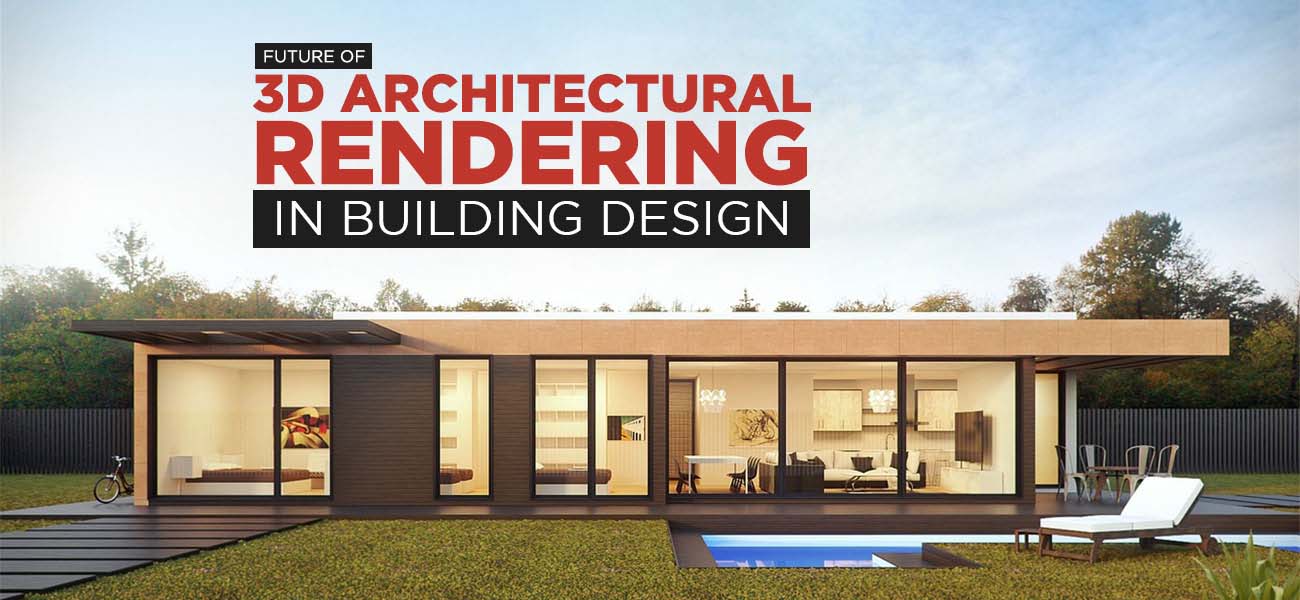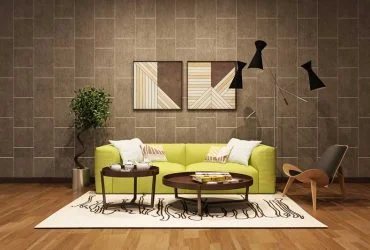How 3D Architectural Rendering is Revolutionizing Building Design?
Dynamism has influenced every industry today, including construction and real estate. It is now crucial to clearly see a design before starting to build. This is where 3D Architectural Rendering becomes important. It helps architects, developers, and builders create realistic images of concepts before any construction begins.
This tool also aids clients in understanding the design and reveals possible challenges. It speeds up approvals, allowing teams to adjust layouts, improve planning, and share ideas more clearly. By turning blueprints into realistic visuals, it is changing building design and making the process more engaging, accurate, and efficient for everyone involved.

What is 3D Architectural Rendering?
It is the process by which we can convert a 2D architectural design or a 3D digital model to create photo-realistic visualizations. This technique is widely used for interpreting how a project would look before construction begins, using elements like texture, lighting, and related materials.
This technology is not just about taking pretty pictures but acts as a pivotal tool for design intent, stakeholder approvals, and technical planning. By making use of these digital models of structures, professionals can now detect design flaws early on. The process involves using 3D modeling software, which helps in crafting high-detail models with accuracy reflecting real-world materials and environments.
The Role of 3D Rendering in Building Design
Gone are the days when floor plans and blueprints were the only means of communicating architectural ideas. Today, 3D rendering services play a central role in bridging the gap between imagination and reality. Architects can now design in a virtual environment, tweak models instantly, and produce renderings that tell a complete story of the project.
Designers use this tool at multiple stages—from conceptual design to final presentation. Its role is not limited to aesthetics; it's about functionality, space utilization, and structural planning. Rendering provides a powerful lens through which a project is evaluated, reviewed, and perfected before ground is broken.
Benefits of 3D Exterior Rendering
-
Enhanced Visualization and Realism
One of the most impactful benefits of rendering is the ability to visualize spaces with remarkable accuracy. Through realistic textures, lighting, and shadows, 3D renders provide an experience that closely mirrors real-world conditions. Clients can “see” the finished project and provide feedback that helps refine the design.
This level of realism is especially beneficial for large-scale residential or commercial projects where every element matters—from tile patterns to window placements. With 3D exterior rendering importance growing rapidly, even the surrounding landscape and environment can be realistically visualized, helping architects design buildings that harmonize with their settings.
-
Improved Communication with Clients
Miscommunication is a common issue in construction projects. Verbal descriptions and 2D drawings often fall short of conveying the complete vision. That’s where 3D architectural rendering services come in. These visuals speak a universal language that bridges technical and non-technical audiences.
Clients can interact with the design, explore different options, and understand layout changes instantly. This eliminates ambiguity and fosters a smoother, more collaborative relationship between stakeholders. Presenting a project visually rather than descriptively saves time, reduces revisions, and builds trust.
-
Cost and Time Savings
Investing in rendering might seem like an additional cost at first, but it pays off significantly in the long run. Design errors identified early in the virtual model prevent expensive corrections during construction. Adjusting a digital render is far cheaper and faster than reworking a physical build.
Rendering also shortens approval cycles. Decision-makers get a clearer understanding of the design, leading to faster sign-offs. The use of 3D rendering has streamlined the entire design-to-build process, eliminating delays caused by misinterpretation or unclear plans.
-
Better Marketing and Presentation
In today’s competitive market, presentation matters. Real estate developers, architects, and construction firms leverage high-quality renderings to attract clients and investors. Stunning visuals enhance brochures, websites, and digital campaigns, making them more persuasive and appealing.
Potential buyers are more likely to invest in a property when they can see exactly what they’re getting. With 3D rendering services, marketers can highlight unique selling points like lighting, materials, and ambiance—features that don’t always come across in traditional photos or sketches.
-
Support for Virtual and Augmented Reality
The digital revolution has paved the way for immersive experiences in architecture. With the integration of real-time rendering, architects can now provide virtual walkthroughs that adjust on the fly. This interactive feature adds an entirely new dimension to the design review process.
When paired with virtual and augmented reality, renderings become even more powerful. Clients can explore properties in a VR headset, interact with design elements, or overlay proposed structures onto real environments via AR. These tools help stakeholders engage deeply with the project, enhancing satisfaction and decision-making.
The Future of 3D Architectural Rendering
The journey of rendering technology is far from over. Advancements in AI, GPU power, and automation are pushing boundaries further. Soon, real-time collaboration in virtual spaces will be the norm. Design changes will update in real-time, allowing for seamless coordination between remote teams.
The future promises smarter visualization tools that reduce manual effort and increase accuracy. Machine learning algorithms are already being tested to automate lighting suggestions, material placements, and structural checks. As technology continues to evolve, rendering will become even more integrated into all aspects of the construction lifecycle—from concept to maintenance.
Conclusion
3D architectural rendering is not just a design enhancement—it’s a complete revolution in the way buildings are imagined, planned, and realized. By offering visual clarity, streamlining communication, cutting costs, and embracing futuristic tech like VR, it sets a new standard in architectural excellence.
Whether you are a designer, client, or developer, embracing rendering means better outcomes and fewer surprises. As we look ahead, this technology will only grow more powerful, accessible, and indispensable to the building industry. The future of architecture isn’t just being built—it’s being rendered in 3D.



